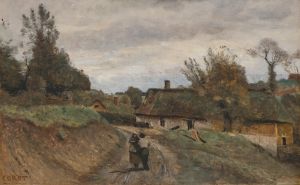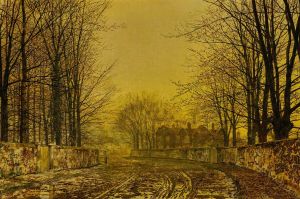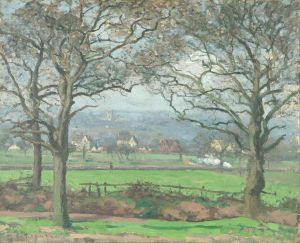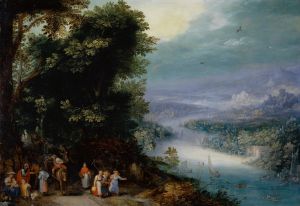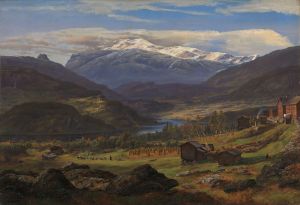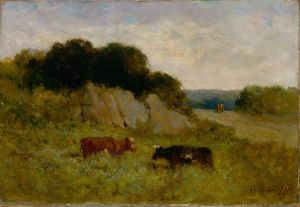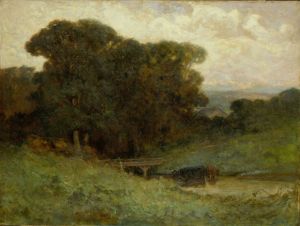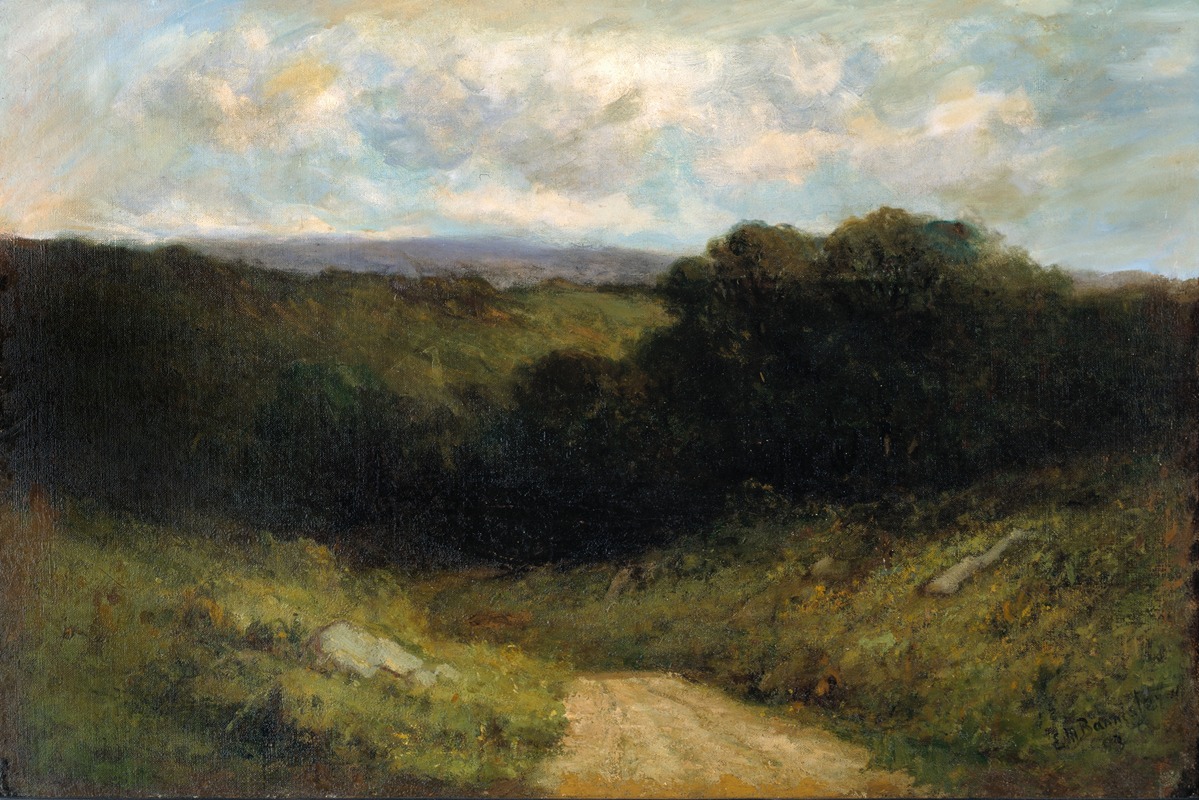
The Road to the Valley
A hand-painted replica of Edward Mitchell Bannister’s masterpiece The Road to the Valley, meticulously crafted by professional artists to capture the true essence of the original. Each piece is created with museum-quality canvas and rare mineral pigments, carefully painted by experienced artists with delicate brushstrokes and rich, layered colors to perfectly recreate the texture of the original artwork. Unlike machine-printed reproductions, this hand-painted version brings the painting to life, infused with the artist’s emotions and skill in every stroke. Whether for personal collection or home decoration, it instantly elevates the artistic atmosphere of any space.
Edward Mitchell Bannister (1828–1901) was a Canadian-born African American artist known for his contributions to the American art scene during the 19th century. One of his notable works is "The Road to the Valley," a painting that exemplifies his mastery in landscape art and his ability to capture the serene beauty of nature.
"The Road to the Valley" is an oil painting that showcases Bannister's skillful use of light and shadow to create depth and atmosphere. The painting depicts a tranquil rural scene, with a winding road leading the viewer's eye into a lush, green valley. The composition is balanced, with trees and foliage framing the road, guiding the viewer's gaze towards the distant hills. Bannister's brushwork is delicate yet expressive, capturing the textures of the landscape and the play of light across the scene.
Bannister's work is often associated with the Barbizon school of painting, which emphasized naturalistic and pastoral scenes. His style reflects the influence of this movement, characterized by a focus on the beauty of the natural world and a preference for plein air painting, or painting outdoors. This approach allowed Bannister to capture the changing effects of light and atmosphere with great sensitivity.
"The Road to the Valley" is a testament to Bannister's dedication to his craft and his ability to convey a sense of peace and harmony through his art. Despite the challenges he faced as an African American artist in a predominantly white art world, Bannister achieved significant recognition during his lifetime. He was awarded a bronze medal at the 1876 Philadelphia Centennial Exposition for his painting "Under the Oaks," which marked a significant milestone in his career and helped to establish his reputation as a talented landscape painter.
Bannister's work, including "The Road to the Valley," is celebrated for its technical proficiency and its ability to evoke a sense of place and mood. His paintings are held in various collections, including the Smithsonian American Art Museum and the Rhode Island School of Design Museum, where they continue to be appreciated for their artistic merit and historical significance.
In summary, "The Road to the Valley" by Edward Mitchell Bannister is a beautiful example of 19th-century American landscape painting. It reflects Bannister's skill in capturing the natural world and his ability to create compositions that draw the viewer into a serene and picturesque environment. Bannister's legacy as an artist is marked by his contributions to the American art scene and his perseverance in the face of adversity, making his work an important part of American art history.






